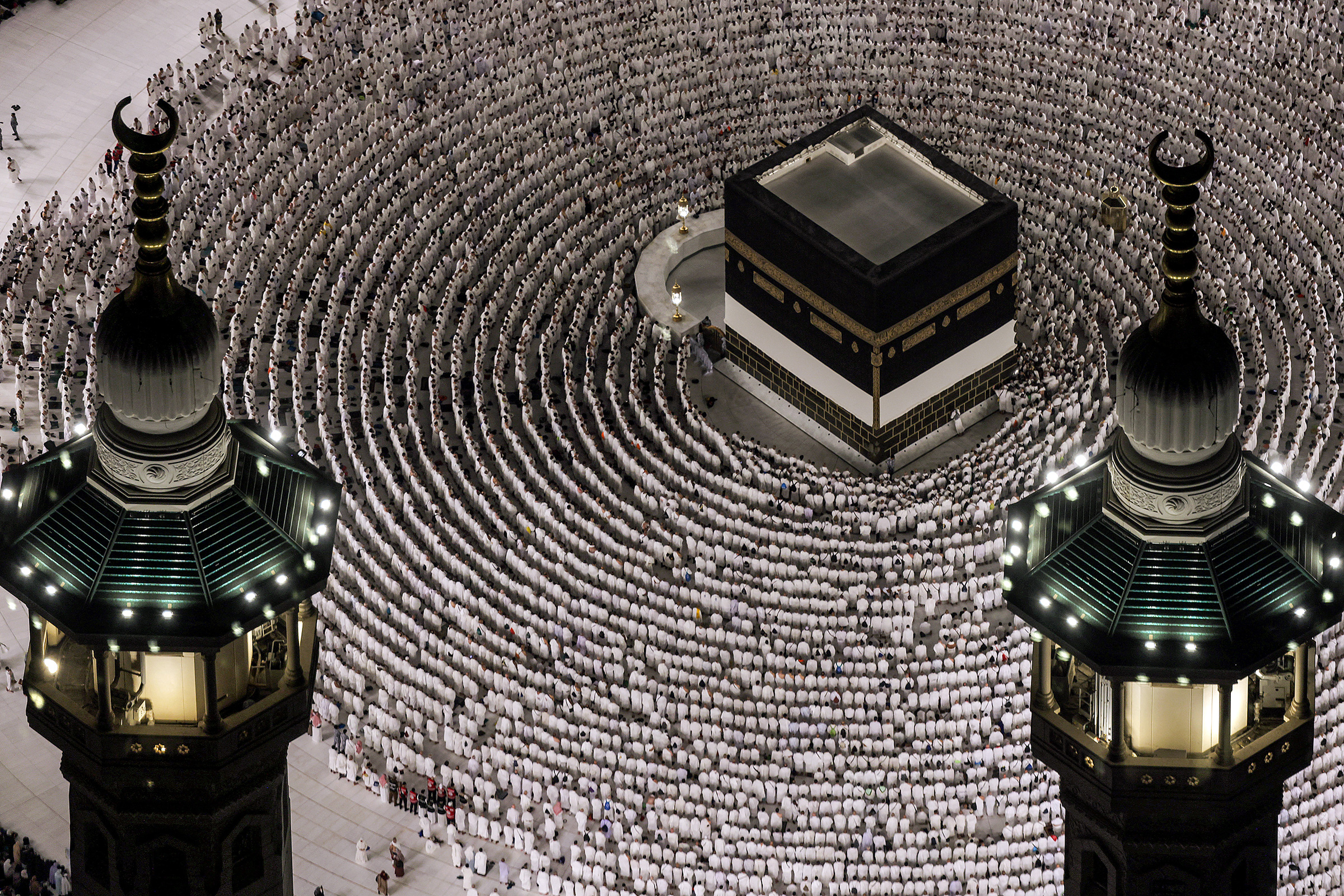Saudi Arabia has announced drastic changes for the 2025 Hajj pilgrimage that begins today, including new rules prohibiting children from accompanying pilgrims, and prioritizing pilgrims traveling for the first time. The changes represent the most significant transformation of pilgrimage access in modern history.
The Hajj, one of the five pillars, or obligations, of Islam, draws about two million Muslims annually to Saudi Arabia to complete the spiritual journey that every mature, able-bodied Muslim is required to undertake at least once in their lifetime. Once a desert journey guided by revelation, the Hajj has become a logistical marvel, and the new policies mark some of the most significant shifts in its 1,400-year history.
[time-brightcove not-tgx=”true”]
The pilgrimage involves a series of rituals over several days, including circling the Ka’ba in Mecca, standing in prayer at Mount Arafat, and acts of devotion that trace the footsteps of the Prophet Abraham and his family. “ Hajj represents a profound spiritual journey for Muslims,” says Shaykh Waleed Basyouni, the President of AlMaghrib Institute, which hosts its own Hajj program. “It’s a time for reflection, repentance, and a renewal of faith.”
Children Banned
The most controversial change prohibits children from accompanying their guardians on the pilgrimage. “ People were surprised, shocked,” says Basyouni, who has made the pilgrimage multiple times.
The Saudi Ministry of Hajj and Umrah cited safety for the decision. In 2024, more than 1,300 people died during the pilgrimage, primarily from extreme heat and overcrowding. But the new policy breaks with centuries of tradition where families often traveled together to fulfill a religious duty.
The minimum age for attendance was unclear, however. Some sources cite 12 years as the cutoff, while others indicate Saudi Arabia has set 15 years as the minimum age. The confusion may be rooted in the variables of personal development: in Muslim legislation anyone who has not reached puberty is considered a child.
Another variable is the weather. Once again this year, the desert pilgrimage coincides with intense summer heat. But because the Islamic calendar shifts about 10 days earlier each year, Hajj will be in the winter from 2034 to 2041 in a natural progression through the seasons over a 33-year cycle.
“ They might put restrictions on children in the summer where Hajj comes during the high season when it’s very hot,” Basyouni says. “But they might change that later on when the weather is much better, because Hajj comes in the lunar calendar.”
First-Time Pilgrims Get Priority
In another major shift, the host kingdom has instituted a system favoring Muslims who have never completed the Hajj. The change addresses long-standing equity concerns within the global Muslim community, where repeat pilgrims from wealthier nations could more easily secure spots than first-time pilgrims from developing countries. Hajj travel packages range from $10,000 to $15,000 per person.
“ I hope that this is an issue that can be solved,” says Basyouni. “It’s one of the pillars of [our] religion. It’s very hard. I don’t know of any ritual in the world for any religion that costs that much money.”
AI, A.C. and Access
Watching over this year’s Hajj will be a network of AI-powered drones, with thermal imaging technology that enables authorities to monitor millions of pilgrims in real-time and respond swiftly to potential safety threats. For the first time, the Saudi Civil Defense has introduced the AI-powered “Saqr” ( Falcon) drone, which can identify and intercept unauthorized pilgrims, supporting the kingdom’s “No Hajj Without a Permit” campaign.
In the Grand Mosque, the world’s largest cooling system, with a capacity of 155,000 tons of refrigeration, represents the Saudis’ response to increasingly extreme heat conditions during Hajj. A year ago temperatures soared to 125 degrees Fahrenheit during the annual rites. Other heat mitigation measures for 2025 include expanding shaded areas by 50,000 square meters, deploying over 400 cooling units, and placing thousands of additional medics on standby.
“It gets very hot, so I think [the change] is wonderful,” says Abdul-Malik Merchant, an Imam for the All Dulles Area Muslim Society (ADAMS) in Virginia. Merchant has gone for Hajj seven times, both as a guide and a traveller. He was there in 2015 when a stampede ended the lives of 2,400 travellers, a catastrophic death toll even in a setting with a history of mass casualty events.
Saudi Arabia had also changed its visa policy, limiting travellers from 14 countries—including Pakistan, Iraq and Morocco—to only a single-entry visa. In past years, people with multiple-entry visas would enter the country during the Hajj season and attend without a permit. The duration of a Hajj visa has also been standardized, expiring on the 10th of Muharram, which is July 6th, 2025. Entry to the holy cities has likewise been tightened. Since late April, only holders of those official Hajj visas, valid residency, or authorized personnel were allowed into Makkah. So far this year, 269,000 people stopped from entering the city for a lack of correct permits.
“ Muslim jurists say it is allowed for the government to put restrictions on some religious rituals,” Basyouni says. During COVID-19, for instance, the Saudi government required that people be vaccinated before performing Hajj during the height of the pandemic in order to protect travellers. The guidelines for any new rule, Basyouni says, is that it must have a clear benefit.

